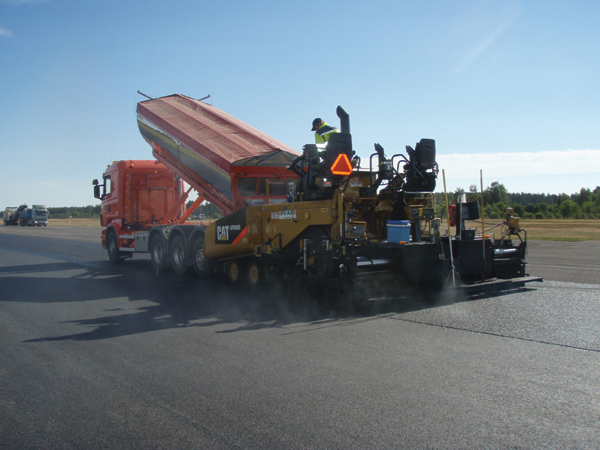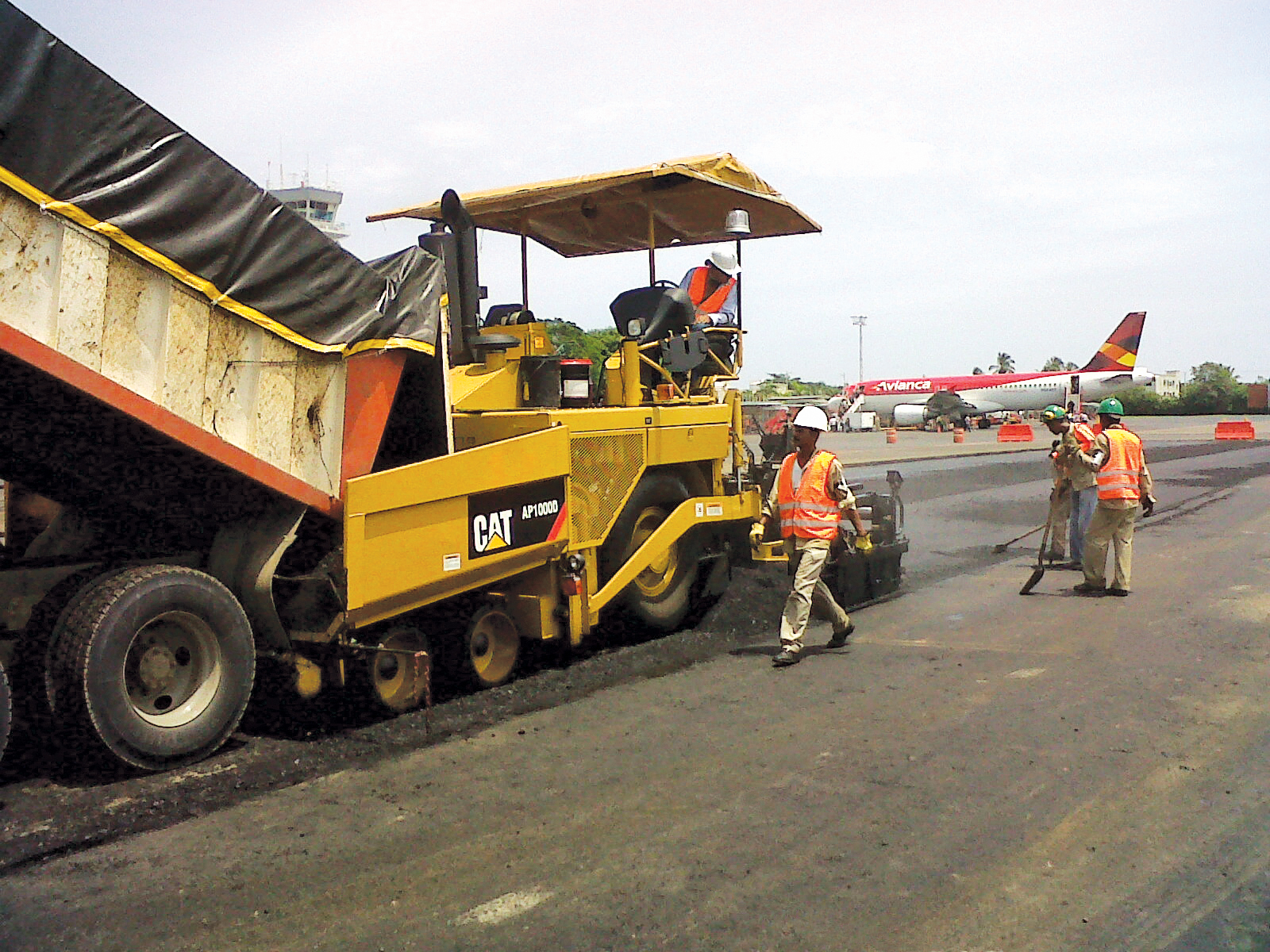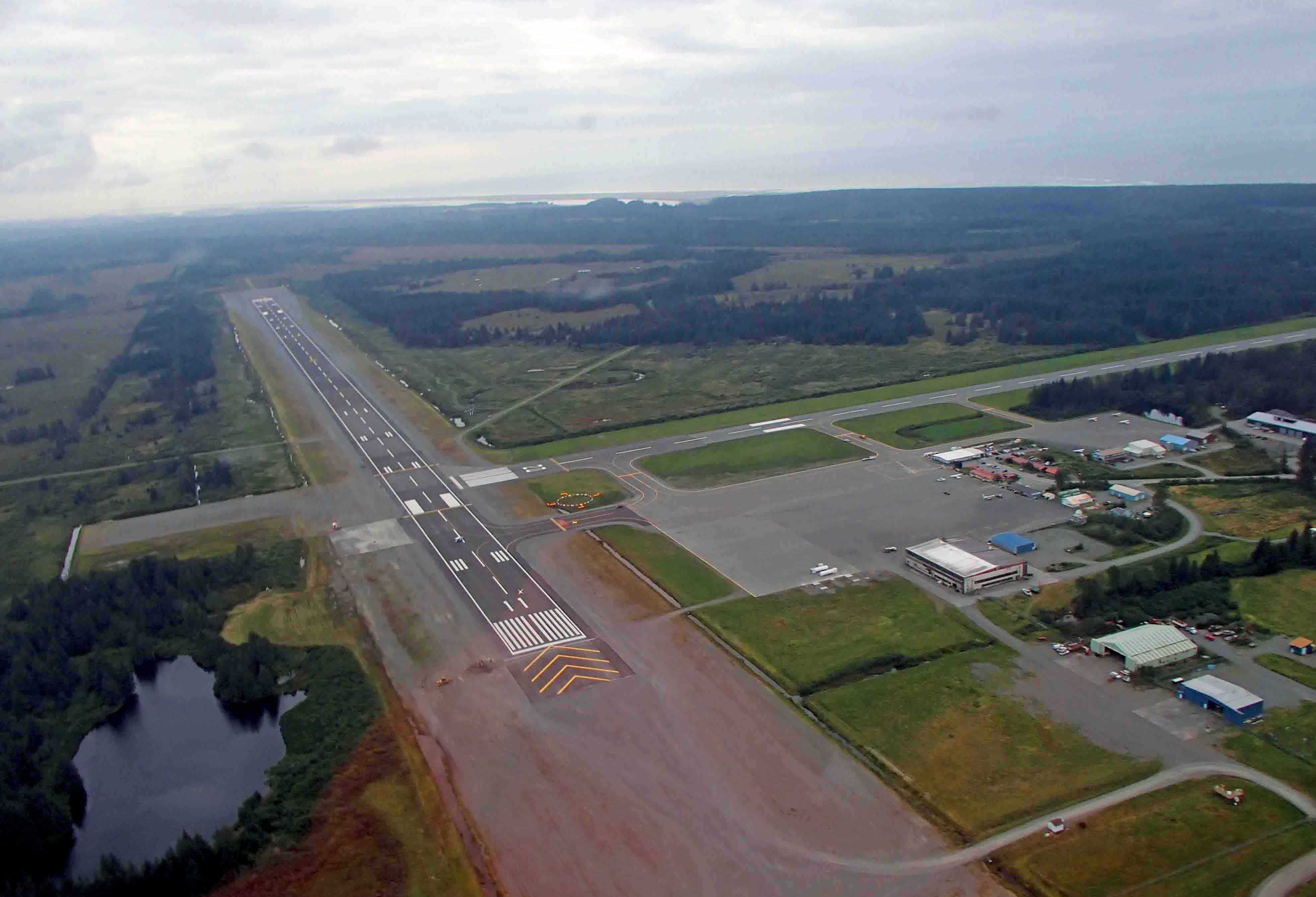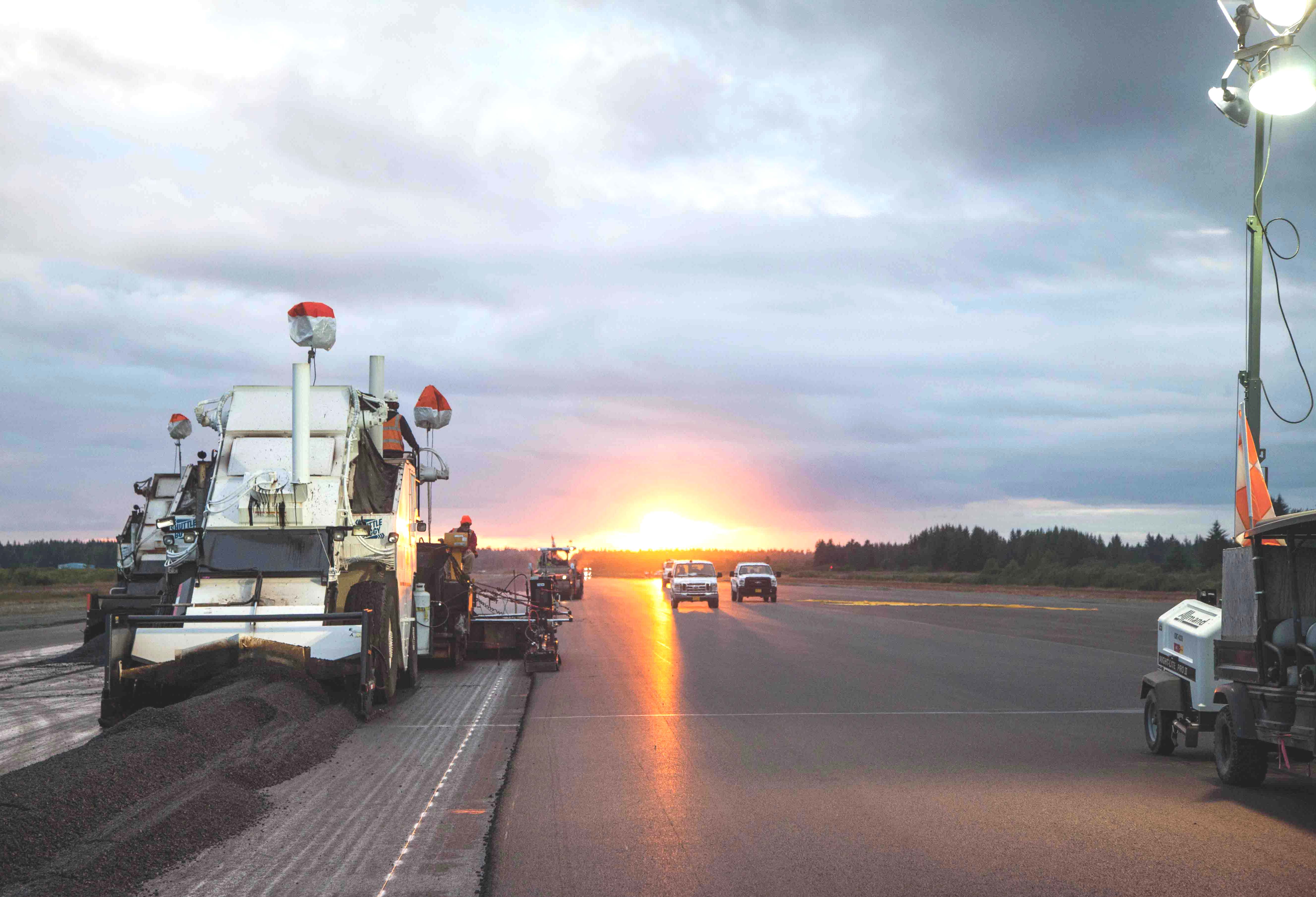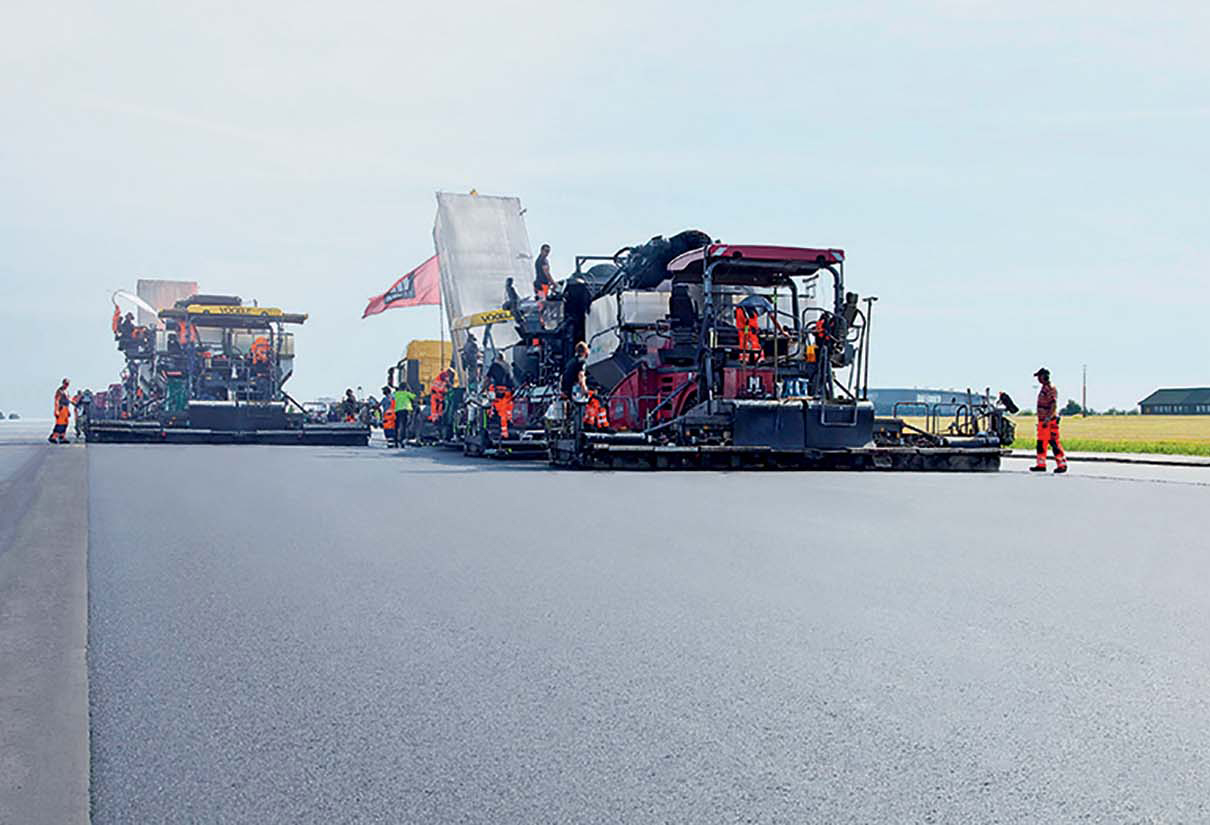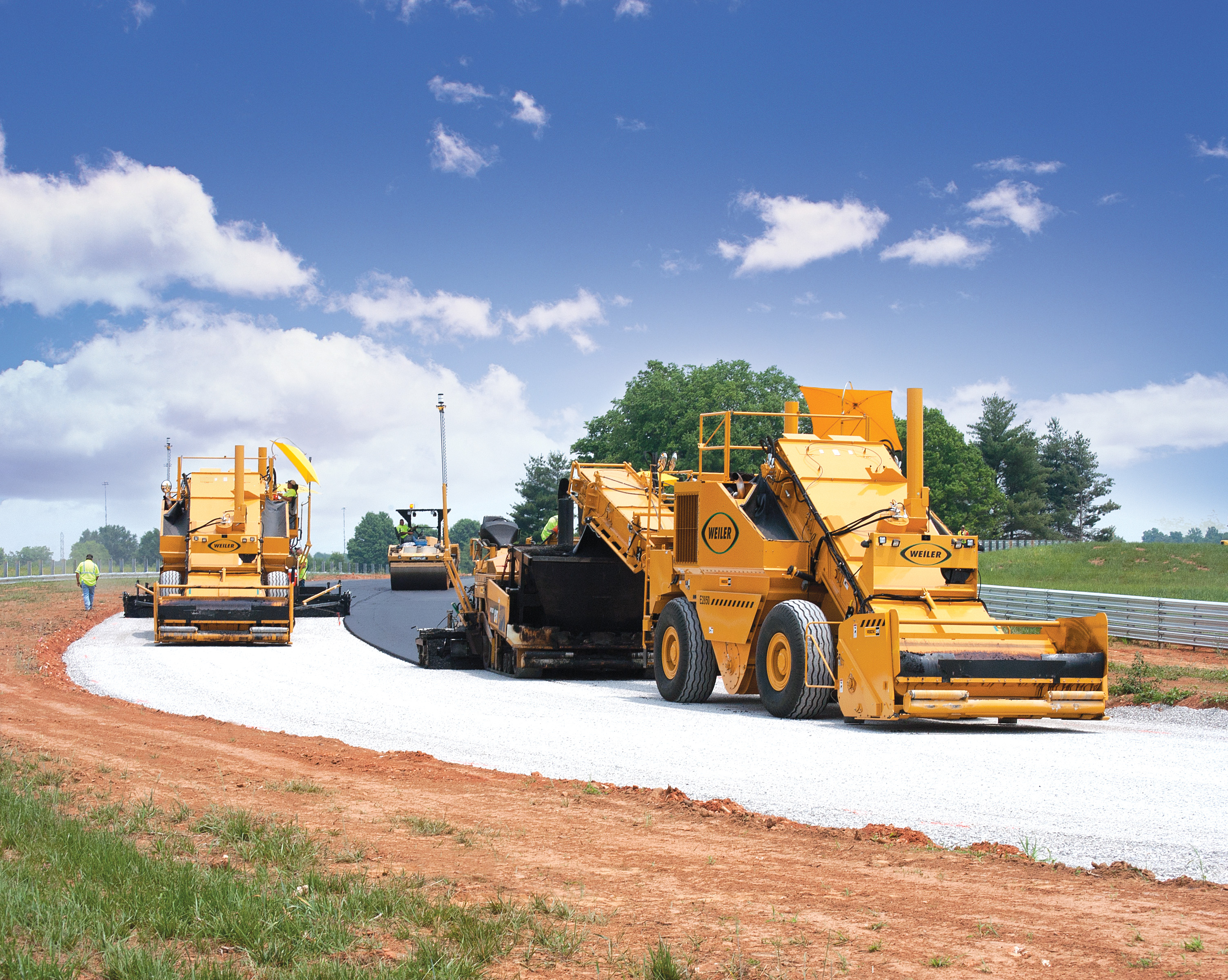Swedish contractor Peab Asfalt generally works on major road and highway projects in the inland portion of the country. However the company has shown itself able to take on a considerable challenge, by repaving an airport runway.
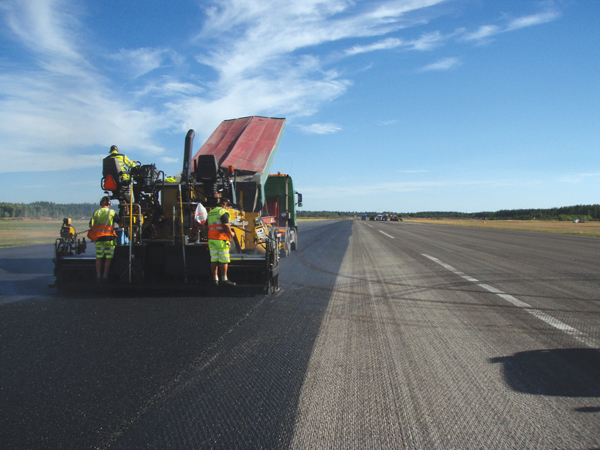
Despite time constraints a Swedish contractor more used to carrying out road projects was able to repave a local airport runway quickly, efficiently and to the necessary high standard
Swedish contractor Peab Asfalt generally works on major road and highway projects in the inland portion of the country. However the company has shown itself able to take on a considerable challenge, by repaving an airport runway.
The project involved construction a new runway surface at an airport in Jönköping, a relatively small facility but one crucial to the inland area of Sweden. To make the work easier for the contractor, most of the scheduled flights were re-routed during the project, with the exception of two/day in the later afternoon or evening. That enabledReijo Seppanen, project superintendent for the company said, "Even with the limited flights, we had to adjust paving schedules." Paving often started in the middle of the night and extended into the late afternoon of the following day. The work was complex and he added, "When you're working on a project like this, anything can happen. You can have problems with the weather and there are always time pressures, deadlines to meet. We have to get off the runway one hour before the next airplane is arriving." Another contractor handled the first phase of the project, which consisted of milling about
50 mm off the existing surface and Peab Asfalt then carried out the paving operation, which took around three weeks. Surface quality is crucial for airport runways given the high landing speeds of aircraft and the enormous impact loads they place on a runway structure. Material segregation presents a major problem in asphalt paving and something Peab Asfalt was particularly keen to avoid on this project. The firm took a series of steps, starting at the plant with proper loading of the trucks and also by using truck bodies with rounded rather than flat bottoms, a feature which prevents sticking when the materials are end-dumped into the paver.
The trucks travelled some 70km from the plant to the airport and material cooling was minimal as the tipper bodies are insulated, traffic volumes were low due to the area and because much of the paving was done at night. The short truck cycle times and various measures used to tackle material segregation helped boost paving quality. The mix left the plant at 170º-180ºC and was dumped into the hopper at about 160º-165ºC. Plant production, paving speed and trucking were all calculated to keep the paver moving at a consistent pace.
Another technique used to minimise segregation was to allow mix to collect in the sides of the hopper throughout the shift. "We don't close the sides between lifts to loosen material," Seppanen said. "The asphalt on the sides is cold, and we don't want to shake it loose and mix it with the hotter material. When the work is done for the day, we clean the sides." The contractors used a new
"The middle of the runway is the highest point because of drainage," Seppanen said. "We started at one side, then made five passes until we reached the middle. Then we started at the opposite side, and worked our way back to the middle." The width of the project led to many longitudinal joints. Peab Asfalt crews placed the new, hot mat slightly higher than the adjacent cold mat. A breakdown compactor used a small side roller to compact the joint. Three 11tonne class rollers handled compaction and the first made 6-7 passes, operating close up to the paver and working as far back as 20-30m from the machine. The second roller worked in vibratory mode about 50m from the paver and the number of passes varied depending on the specific conditions on that day. The third roller had no set distance between it and the rest of the paving train and was largely used to take the tracks out of the mat and provide a smooth finish. Core samples were taken along the way to ensure adequate compaction was being achieved.
Although the project placed heavy demands on the contractor in terms of productivity and time the firm was able to meet the challenge and both the paving crew and machines used proved equal to the task.



